I discovered Redstone Quarry in early September, completely by chance. I was biking back to campus and tried to take a shortcut through a residential neighborhood, but instead I ended up at the top of the dead-end Hoover Street, where I was presented with my first view of the quarry.
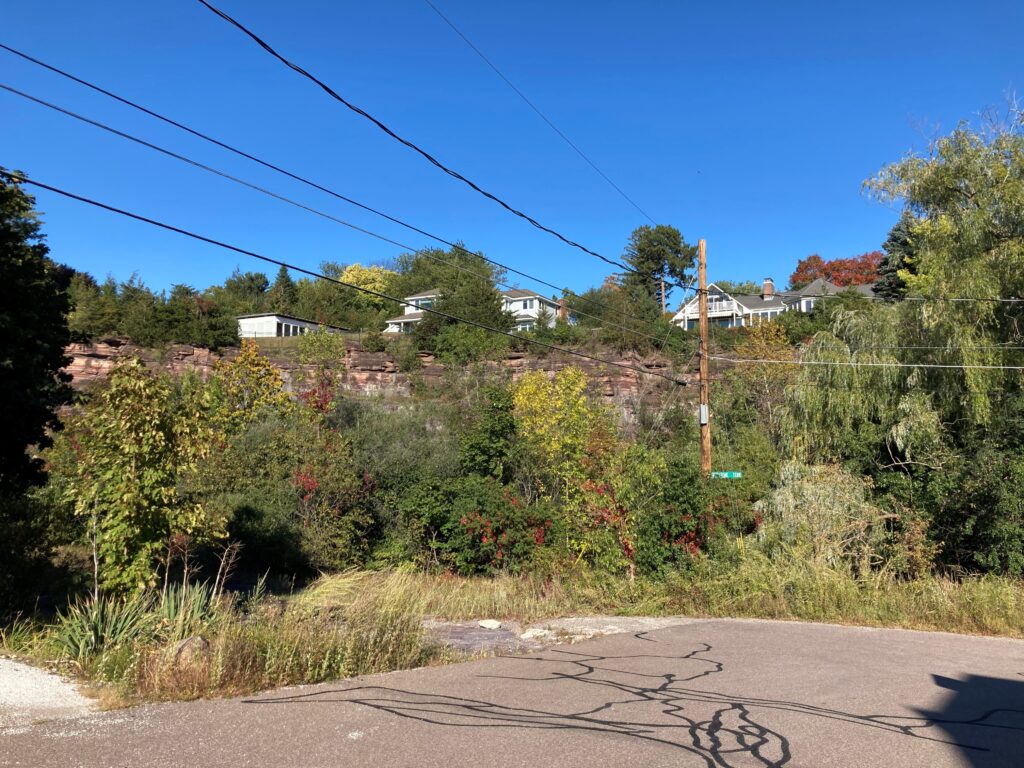
I spent an hour exploring and was impressed by the site’s dramatic cliffs and expansive sunny rocks, and how it was hidden at the end of a side street in the city of Burlington. I subsequently learned the location’s name, and when I learned about this project the serendipity of how I had discovered it, as well as its location a mile from campus made it an obvious choice for my blog. Additionally, wild plants and animals that live on the fringe of human development have always fascinated me, and in the coming weeks I hope to learn more about how human land use has impacted this site.
I visited the quarry on the afternoon of October 11th, with the intention of observing and recording the plant life it hosts. The quarry as a whole is considered a ledge, thanks to its exposed bedrock that lacks all but a thin layer of soil. Several distinct ecological niches exist at within this site. Approaching from Hoover Street the visitor is first greeted by an expanse of rock, which almost resembles old pavement.
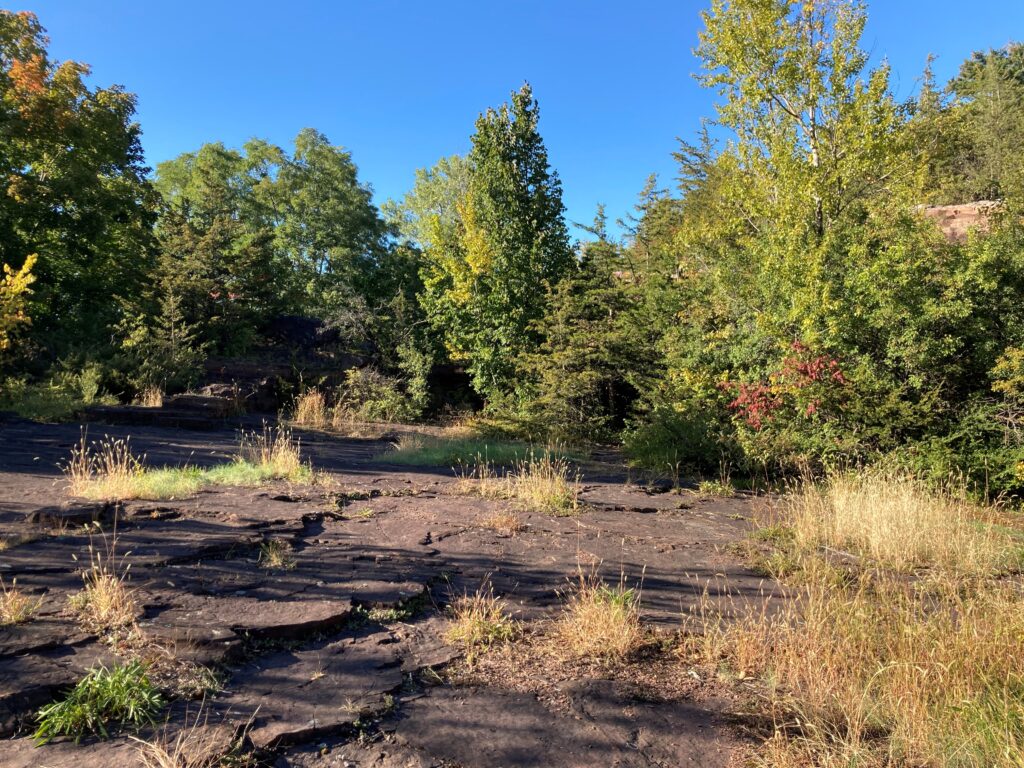
A surprising variety of plant life exists in the shallow soil found on top of the rock and in cracks and crevices. Stands of a 1 foot tall herbaceous plant with round segmented stems which I was unable to identify are common, as are White and Caucasian stonecrop and moss. Grasses, chives, and Bogmyrtle are also found throughout area.
Approaching the stream the soil grows thicker and plant life becomes more diverse. The ground is covered by Glechoma, iris, Asteroideae, American aster, Cotoneaster, Blue aster, Red chokeberry, some sort of rose (possibly Multiflora rose, which is often found in regrowth areas), and various grasses. The overstory is dominated by Buckthorn, which grows up to 20 feet tall, but willow, Juniper, and some sort of ash are also present. Most of the Buckthorn and willow still have their leaves, but the ash tree only had a few dry leaflets left, which contributed to my difficulty conclusively identifying it. None of the trees exceeded 20 feet in height. At the center of the forested patch is a wetland, with a few inches of stagnant water full of fallen leaves. It houses numerous cattails, particularly where the water isn’t shaded by trees.
On the far side of the stream there are more plants at the base of the cliff. Buckthorn is still common, but Juniper has become the dominant tree species, with elm, Barberry, and a cluster of ~30′ Norway maples making up a sizeable portion of the population. Creeping juniper, chives, iris, and roses are also common where dirt can be found. The vegetation on the side of the cliff is similar – juniper and chives are dominant, but White stonecrop grows out of cracks in the rock and a plateau part way up sports Buckthorn, roses, and a plant with red leaves I was unable to identify.

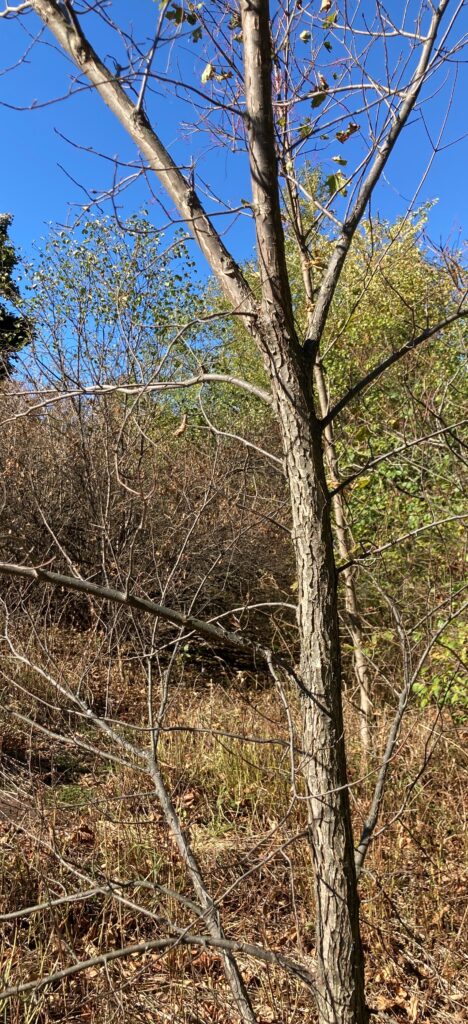
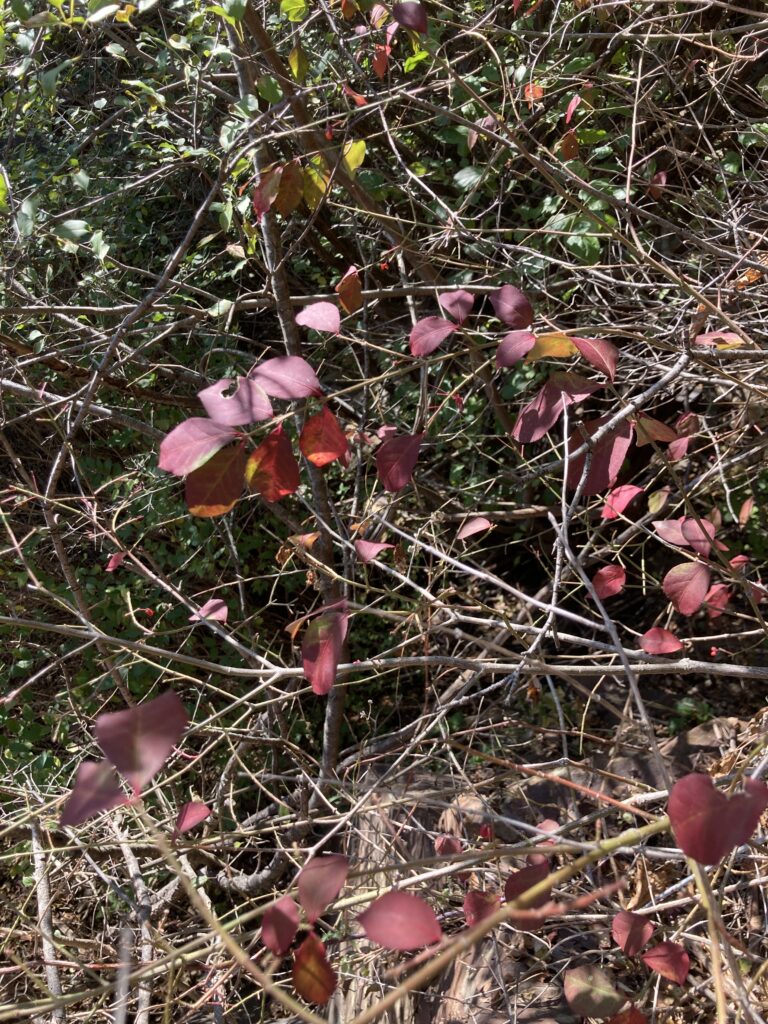
At the northwest base of the cliff I found some sort of hickory, a plant I believe to be of the genus Populus, some free-standing grapevines, some short (less than 6′) White ash, American beech, and Burning bush. Following the foot of the cliff further northwest the forest opens up to bare bedrock again, adorned by sumac, the same unknown plant with red leaves, various grasses, more Populus, a couple shorter Norway maples, chives, Cotoneasters, and a tall Basswood tree.
Over the two hours I spent there I also encountered some wildlife: two cardinals, one male and one female, were flying near the top of the cliff around 3:06 PM. I saw a chickadee pecking at a tree around 3:21. And finally, I saw a large grey squirrel run up a tree around 3:24. Unfortunately, I didn’t get good pictures of any of them.
I’m looking forward to becoming more familiar with this amazing site and observing its seasonal cycles.
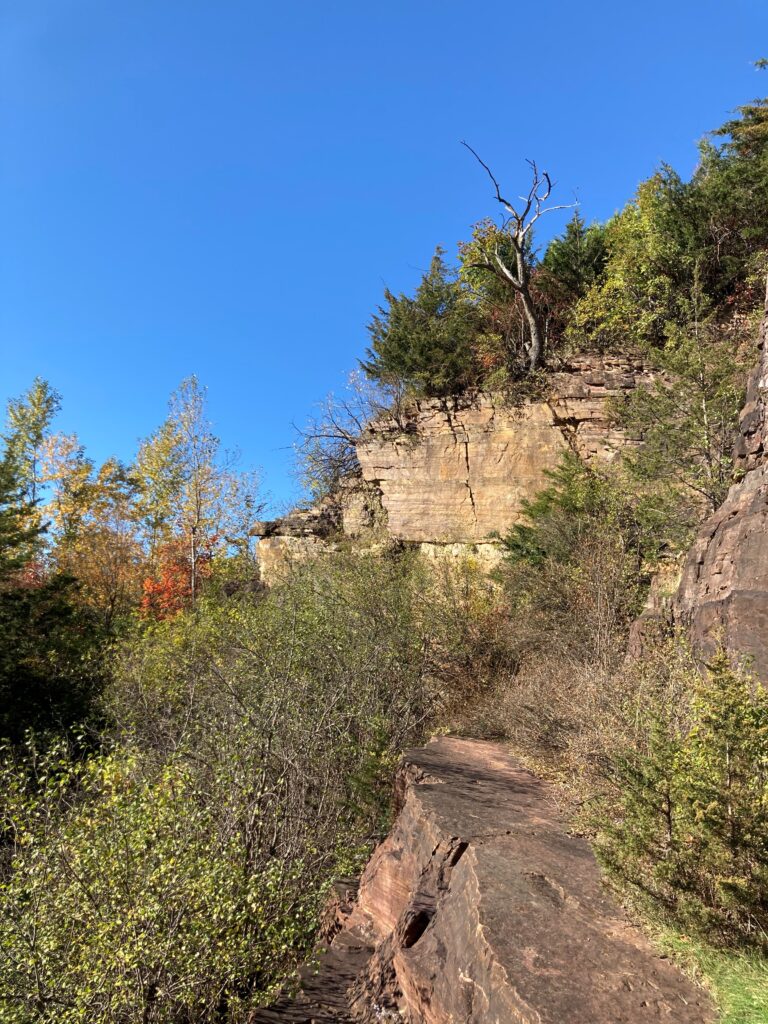
All images: Walsh, E. J. (2020). Redstone Quarry [Digital photograph].